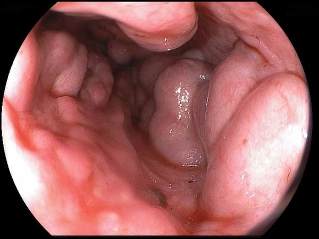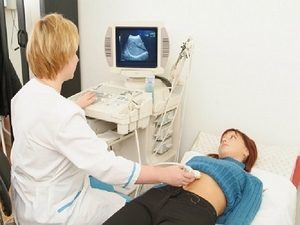A pathological condition in which there is vasodilatation in the lower part of the tube of the esophagus or of the stomach, adjacent to it, called varicose veins of the esophagus, the symptoms of which will be discussed in this article.

The disease develops as a result of the increased pressure in the portal vein, which reduces blood flow. This condition is called chronic hepatitis b, cirrhosis of the liver. There is a change in the structure of the blood vessels. Their walls are formed of different protrusion, and the shell of the capillary cleaning.
The vessels have a tortuous shape, the mucous membrane is hyperemic and there is ulceration. This leads to massive bleeding, with no previous symptoms.
Pathology has a code ICD 185, which is defined as the varicose veins of the esophagus, 185 (9) without bleeding, 185 (0) of bleeding.
What is
Resistant hypertension (high blood pressure) in the portal Vienna in 2-4 times more than normal leads to diseases of the esophagus. Further increase of the pressure (24 – 27 lead.St) leads to the rupture of a blood vessel and the development of bleeding.
Hypertension in the portal vein leads to a decrease of blood flow, the deformation of the blood vessels, their elongation and thinning of the walls. On the walls of blood vessels are formed protrusions where the blood. The elevated pressure increases the load on the capillary wall and may burst.
The pathologies of the cardiovascular system varicose veins are very small and localized, the entire surface of the tube of the esophagus. If the extension is called the pathological processes in the liver, the vessels are more dilated, and am amazed they are in the lower part of the esophagus.
Complications such as bleeding did not depend on the size of the varicose node, or from the state of the vascular wall and the jump in pressure in the portal vein.
It cause:
- overeating;
- increased physical activity;
- the increase of intra-abdominal pressure.
Sometimes the bleeding is manifested in during sleep. There are factors that worsen the condition: failure of the cardia, and a reduction in the clotting of the blood. Here dangerous than varicose veins of the esophagus.
With diseases of the veins of the esophagus ICD 10 code the doctor needs to know.
Esophageal varices: causes
The reasons for its development are the pathological processes that lead to hypertension in the portal vein. This:
- parenchymal disease of the liver caused by cirrhosis, tumors, amyloidosis;
- stenosis of the portal vein (thrombosis, compression from the outside, multiple sclerosis);
- chronic insufficiency of the cardiovascular system.
At risk people who can get varicose of the esophagus include:
- >persons older than 50 years (most are men);
- patients with chronic pathology of the cardiovascular system and digestive tract;
- patients with hepatic cirrhosis.
Most often varicose veins of the esophagus develops in liver cirrhosis and chronic hepatitis. The abuse of alcohol occurs changes in the structure of the parenchyma. There are create scars that disrupt the normal flow of blood, slow it down, as a result of the stagnation of blood and formation of varicose blood vessels.
Stage of the disease
Isolated congenital form that occurs in infants. But this pathology is rare and is accompanied with other serious injuries. The development of diseases caused by hereditary factors and pregnancy. The acquired form occurs in men over 50 years and have bad habits.
According to the degree of vascular lesions there are four types of diseases:
1 phase. This is the initial degree to which the veins in the amount not exceeding 3 mm and is determined only by endoscopic examination. When conducting x-rays with contrast agent shows slow flow of blood, but not bleeding. While the esophageal opening is less "irregular".

Phase 2. In this stage the lumen of the vessel is not broken and varicose veins are not enlarged, but the veins become tortuous structure. The diagnosis is confirmed using contrast radiography, which does not show clear outline of the vessels and rounded protrusions. There is no bleeding.
3 phase. It is not a steady expansion of some parts of the vessels, the vein lumen is narrowed. Clearly visible veins, altered mucous membrane (cleaning). This stage is characterized by a high risk of hemorrhage.
The x-ray image shows the formation of the lining of the stomach in the form of polyps, as well as the chiseled perforation of the mucosa. The condition is considered severe and requires immediate hospitalization.
Stage 4. There is a strong thinning of the mucous membrane of the vessels, the formation of polyps. Varicose veins of the esophagus at this stage has the form of clusters and substantially blocks the lumen of the esophagus. With the progression of the disease, can shut down. During this period, the patient suffers from redness of the mucous membrane, the formation of the erosive defects. This condition is considered critical, because it causes frequent and major bleeding.
Varicose veins of the esophagus symptoms
The appearance of the disease does not manifest. Because of this, patients seek treatment when the disease is already "gained momentum". Independently identify the disease it is impossible, because the initial manifestations of the disease are similar to symptoms of disorders of the digestive system. So, if there is a dilatation of the esophagus, the symptoms will be the following:
- the appearance of a lack of oxygen;
- the presence of heartburn (does not depend on the meal);
- pain in the region of the xiphoid process;
- impaired swallowing.
If you have varicose veins of the esophagus and the stomach, its main characteristic vascular pattern on the skin of the anterior abdominal wall in the form of "Medusa head". It consists of pathologically changed veins. This symptom occurs in the later period of the disease. Later, with the appearance of bleeding in a patient are present:
- bloody vomiting;
- blood in the stool;
- tachycardia;
- hypotension (sudden drop in blood pressure);
- shock.
Diagnosis and treatment
Is determined by the patient's varicose veins of the stomach and the stomach of the methods such as:
- Ultrasound of the esophagus, abdominal cavity;
- General analysis of blood;
- x-ray using contrast.
Making a diagnosis, take into account that the bleeding may cause ulcerative lesions of the esophagus, decaying of the tumor. The longitudinal tear in the mucosa of the upper part of the stomach or distal region of the esophagus caused by frequent vomiting.
After confirmation of the diagnosis of varicose veins of the esophagus treatment, i.e., the degree of vascular lesions of the tube of the esophagus. If the disease is discovered when you see the bleeding, then treatment is aimed at the prevention of:
- transfusion of blood;
- vasoconstrictors;
- styptic medicines;
- electrocoagulation of the affected vessel;
- the pressure of the blood vessels of the investigation.
After this is carried out therapeutic measures aimed at the prevention of the repetition (repetition) attack. If you are experiencing varicose veins of the esophagus liver cirrhosis, is treatment of the underlying disease. It is aimed at restoring the function of liver tissue. Also, the patient must give up bad habits, to avoid strong physical exercise.
- Prescribe antacids (medicines that reduce the acidity of the emergence of oss), to prevent unnecessary irritation of the esophagus.
- Astringent preparationsthat reduce inflammation.
- Vitamin therapy.

When the diagnosis of varicose veins of the esophagus drug therapies may be supplemented with surgical intervention for the prevention of relapse can take place.
A bandage through the expanding set of small discs of rubber. Introduction hemostatic solution into the affected vein. Performed the procedure at least four times a year. Completely remove all the damaged veins that are not recoverable.
Cirrhosis of the liver the patient is not able to complete the job. In this case, carry out endoscopic examinations of the esophagus vessels. The procedure is the ligation of the vessel with a nylon loop or elastic rings.
Especially bypass, which connect the portal and hepatic veins. This provides the opportunity to normalize the pressure in the blood vessels.
Diet
When the diagnosis of varicose veins of the esophagus treatment includes many measures, including in accordance with certain rules of supply.
Diet for varicose veins of the esophagus involves the use of products that are capable of improving the elasticity of blood vessels, strengthen them, and also prevents the formation of blood clots.
It is recommended the food should contain vitamin b, C and fiber:
- beans;
- green salad;
- corn and olive oil;
- citrus;
- seafood;
- nuts;
- of vegetables and fruits.
Meat is substituted with seafood or beef liver. It is not recommended to eat salty, spicy and a bit of tangy dishes, after which the patient drinks a lot of water. This leads to swelling of the tissues. The recommended amount of fluid per day is 2 liters. Also, not you can drink whole milk, reduce the elasticity of blood vessels.
You can't use:
- alcohol;
- black tea and coffee;
- from sweets;
- canned and smoked meat;
- sugar.
In the preparation and consumption of dishes has its own nuances. To cook food have a way of cooking, and bake. You need to eat small portions, so as not to transfer, this dish should not be too hot or cold.
Preventive measures
To prevent the disease you should immediately contact your doctor. Treatment of pathologies of the liver, if they are in the history. You will have to follow proper diet, to get rid of bad habits and to control weight. Also, you do not need to subject the body to excessive physical loads.
This applies not only to activities, but also training in the gym with the implementation of power exercises. Exercise should not be excluded, but you need to perform exercises designed by physiotherapists specifically for patients with varicose veins of the esophagus. A large number of exercises that are aimed at improving the circulation of blood, reducing the risk of blood clots, lowering of cholesterol deposits.
Also, in the prevention of such disease as varicose veins of the esophagus plays a major role, well-coordinated work of the digestive tract. Therefore, in these patients it is recommended to drink infusions of herbsthat have choleretic effect, improves digestion of food. To prevent reflux (regurgitation) of the stomach contents into the esophagus is irritation, you need to sleep, raising the head of your bed 10 cm.

The implementation of these recommendations will help to avoid the development of the disease or its recurrence. And we must remember that to go to the doctor is necessary the first symptoms to prevent serious complications, such as excessive bleeding. It is desirable to deal with the disease venous dilatation of the esophagus.




































